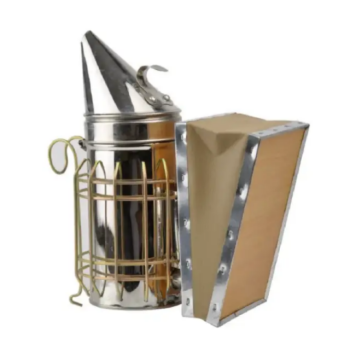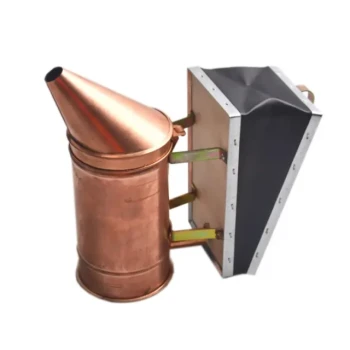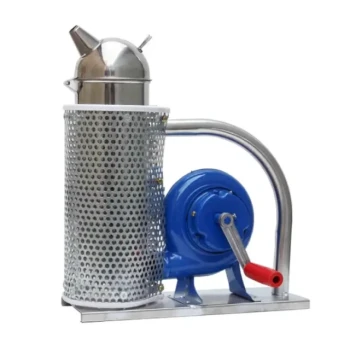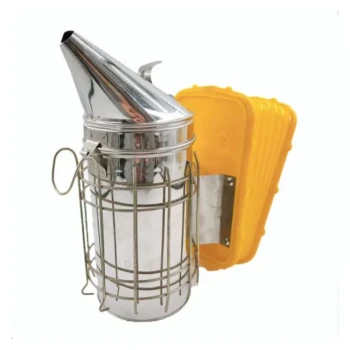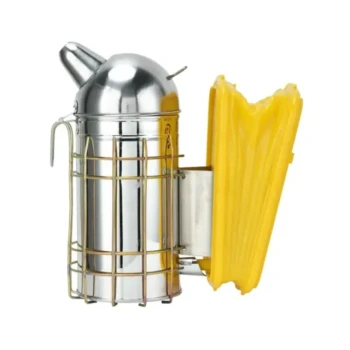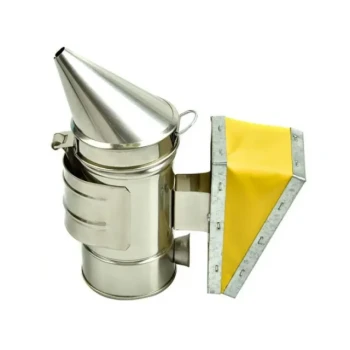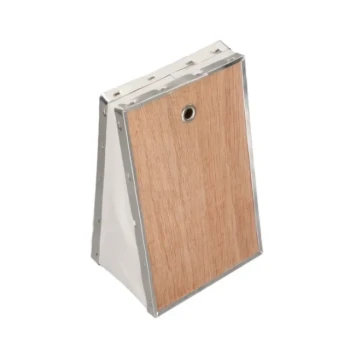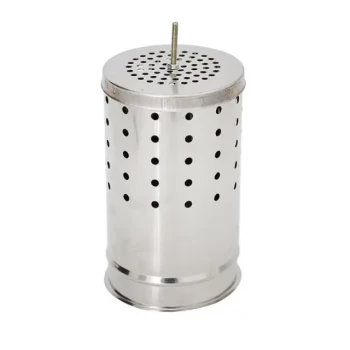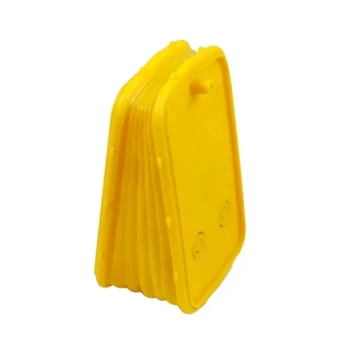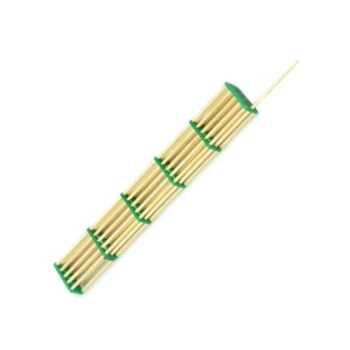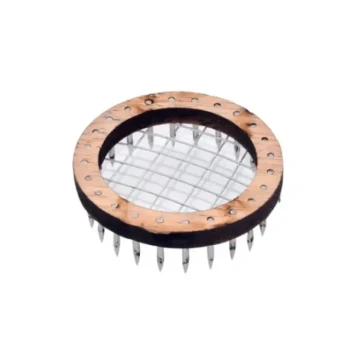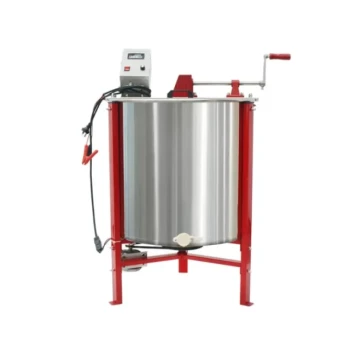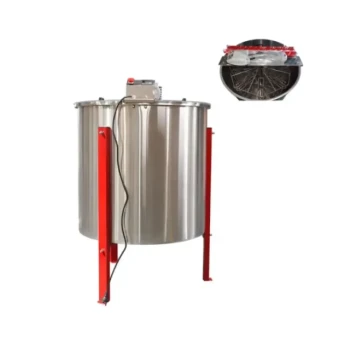The most effective fuels for a bee smoker are natural, non-toxic materials that smolder for a long time without producing an open flame. Beekeepers commonly use materials like commercial cotton fiber, dry pine needles, wood shavings, and organic burlap. The key is to select a fuel that produces a cool, thick smoke to calm the bees without harming them.
Choosing a smoker fuel is about more than just making smoke; it's about controlling the hive environment safely. The ideal fuel burns cool and slow, producing a gentle smoke that calms the bees without harming them, the queen, or leaving behind toxic residues in the hive.
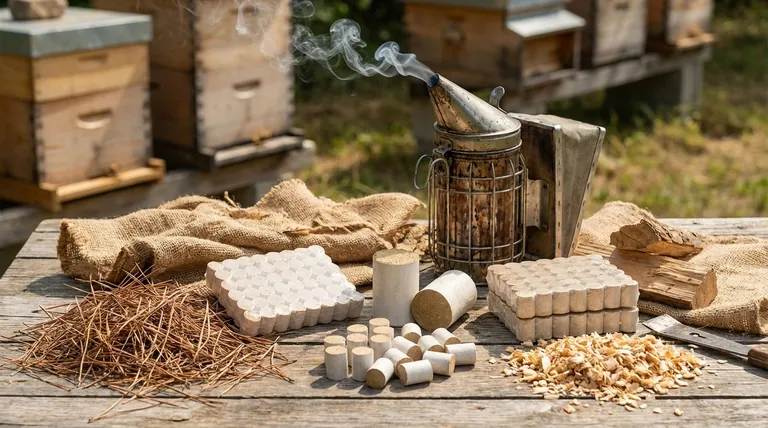
The Principles of an Ideal Smoker Fuel
To choose the right fuel, you must first understand the qualities that make it effective and safe. The goal is a consistent, manageable smoke, not an uncontrolled fire.
Produces Cool, Gentle Smoke
The primary purpose of smoke is to mask alarm pheromones, not to scorch the bees. Hot smoke can injure or kill bees and damage the comb.
Cotton fiber is widely considered the best fuel for producing cool smoke. In contrast, materials like corrugated cardboard are known to produce very hot smoke, which can be dangerous for the colony.
Ensures a Long, Consistent Burn
An effective fuel should smolder for an extended period, reducing the need to constantly add more material during an inspection. A fuel that burns too quickly can create an open flame or go out unexpectedly.
Again, cotton excels here, smoldering up to three times longer than many other fuels. Materials like burlap and cardboard, while they produce a lot of smoke, burn out very quickly.
Is Free of Toxins and Contaminants
This is a non-negotiable safety requirement. Never burn materials treated with chemicals, pesticides, or synthetic resins. The fumes can be toxic to the bees and can contaminate the honey.
Always use organic burlap, and be cautious with cardboard, as some types contain glues or resins that can gum up your smoker and release harmful compounds. Avoid toxic plants like the Brazilian Pepper tree entirely.
Evaluating Common Fuel Types
Different materials offer a mix of convenience, cost, and performance. Here is a breakdown of the most common options.
Cotton Fiber: The Gold Standard
Specially prepared cotton smoker fuel is favored by many experienced beekeepers. It lights easily, produces a uniquely cool smoke, and smolders for a very long time, minimizing the risk of embers falling into the hive.
Pine Needles, Wood Shavings & Pellets: The Natural Choice
These materials are excellent, readily available options. Dry pine needles ignite quickly and are great for starting the smoker. They can be topped with slower-burning wood shavings, wood pellets, or punk wood to create a long-lasting smoke.
Burlap & Cardboard: The Convenient Options
Burlap sacks and corrugated cardboard are easy to find. They produce a large volume of smoke and are useful if you're in a pinch. However, they come with significant downsides.
Both burn hot and fast. You must ensure any burlap is 100% organic and untreated. Cardboard smoke is often the hottest of all fuels and should be used with extreme caution.
Understanding the Trade-offs
Selecting a fuel is an exercise in balancing competing factors. There is no single "perfect" fuel for every situation.
Heat vs. Smoke Volume
Some of the materials that produce the most smoke, like cardboard, also produce the most dangerous heat. Prioritizing a cooler smoke is almost always the safer decision for the health of your bees.
Burn Time vs. Ease of Ignition
Materials that are easy to light, such as dry leaves or pine needles, often burn out quickly. Slower, longer-burning fuels like dense cotton or punk wood may require more effort to get started. A common technique is to layer fuels, using a fast-lighting material as a starter and adding a slow-burning material on top.
Convenience vs. Safety
While it's tempting to grab readily available materials like cardboard or bailer twine, their potential downsides—hot smoke, quick burn time, and possible chemical contaminants—make them a riskier choice. Purpose-driven fuels like cotton or foraged natural materials like pine needles offer a much safer profile.
Making the Right Choice for Your Apiary
Your choice of fuel should align with your priorities as a beekeeper.
- If your primary focus is maximum bee safety and performance: Use a commercial cotton fiber fuel for its cool smoke and long, consistent burn.
- If your primary focus is cost-effectiveness and natural sourcing: Rely on locally foraged pine needles, wood shavings, punk wood, or corn cobs.
- If your primary focus is immediate convenience: Use organic burlap or cardboard sparingly, being constantly mindful of the high heat and short burn time.
By understanding these principles, you can select the right fuel to ensure calm inspections and a healthy hive.
Summary Table:
| Fuel Type | Smoke Temperature | Burn Time | Key Characteristics |
|---|---|---|---|
| Cotton Fiber | Cool | Very Long | Gold standard; safe, consistent smolder |
| Pine Needles / Wood Shavings | Cool to Moderate | Medium | Natural, cost-effective, readily available |
| Burlap (Organic) | Hot | Short | High smoke volume; use with caution |
| Cardboard | Very Hot | Very Short | Convenient but risky; can be toxic |
Ensure the safety and calm of your apiary with the right smoker fuel. HONESTBEE supplies commercial apiaries and beekeeping equipment distributors with high-performance, wholesale-focused beekeeping supplies. Our selection includes premium, long-burning cotton fiber and other safe fuel options designed for professional beekeeping success. Contact HONESTBEE today to discuss your wholesale needs and keep your hives healthy and productive.
Visual Guide
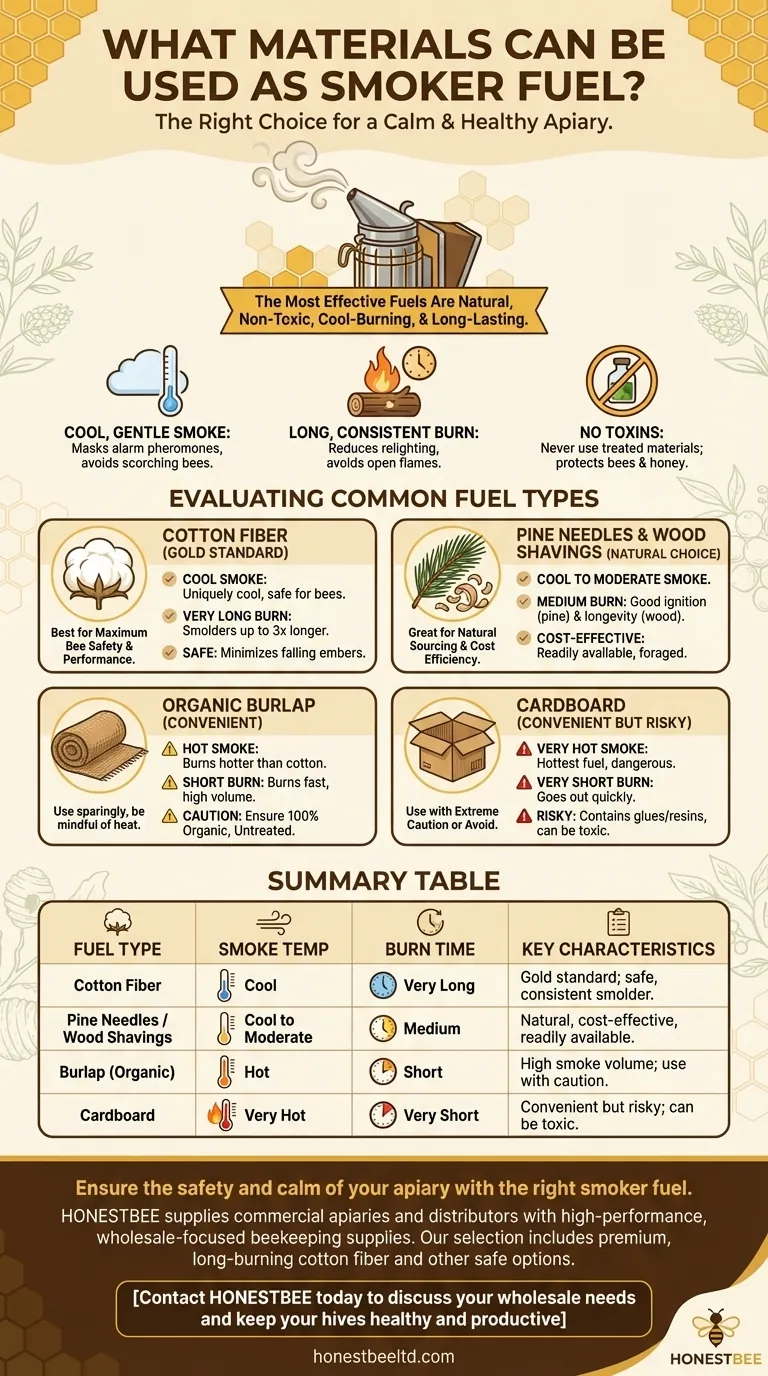
Related Products
- 54-Piece Smoker Fuel Pellets for Beekeeping Beehive Smoker Fuel
- Stainless Steel Honey Bee Smoker Hive and Honeycomb Smoker for Beekeeping
- European Stainless Steel Bee Smoker for Honey Bee Hive
- Premium Traditional Copper Bee Smoker with Bellows
- Stainless Steel Bee Hive Smoker Beekeeping Smoker for Wholesale
People Also Ask
- What is best to burn in a bee smoker? Master the Layered Fuel Technique for Calm Hives
- What is used in a bee smoker? Master the Best Fuels for Calm, Healthy Hives
- What is the importance of fuel in a bee smoker? Ensure Cool, Calming Smoke for Your Hive
- What is the best material for a bee smoker? Choose the Right Fuel for a Calm Hive
- What is the best bee hive smoker fuel? Choose Natural, Slow-Burning Fuel for Calm Bees

